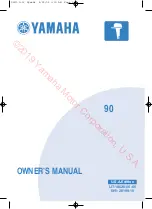
EVGA Z790 CLASSIFIED (121-RL-E798)
- 61 -
RAID10
: RAID10 is a nested RAID, which is a type of RAID utilizing multiple
arrays within a single configuration. This type of virtualization allows you to have an
array where each node has its own level of redundancy. RAID10 is highly scalable, but
this motherboard supports arrays of only four drives – up to two RAID10 arrays, total.
RAID10 is comprised of two or more Mirrored arrays (RAID1s) that are striped
together (RAID0). Looking at it a different way, this is RAID0 using a stripe of mirrored
logical drives.
The Good-
Excellent Fault Tolerance
Good rebuild times, compared to other modes with redundancy.
Overall performance is good; comparable or slightly faster than RAID5.
The Bad-
Low capacity for the number of drives required.
RAID10 fault tolerance works different than RAID1 and RAID5 because the array has
nodes with internal redundancy. Although a four-drive array can lose two drives and
remain operational, it greatly depends on which two drives fail. If both physical drives
from the same logical drive fail, then half of the data is gone and the array has failed.
However, every logical drive, regardless of the number of total logical drive, can suffer
one internal failure with no adverse effects.
A final note regarding capacity – Using drives of different sizes will affect the maximum
capacity of each mirror in a RAID10. When creating the array, the controller will look
at the drive with the smallest capacity in the mirror and use this as the size for each drive
in the array. This follows the rule of RAID1. The striping portion of the array will
follow RAID0 and combine the sum of each mirrored array.
Which types of RAID can I use with my setup?
1 Drive - No RAID arrays are supported
2 Drives - RAID0 and RAID1.
3 Drives - RAID0, RAID1 and RAID5.
4 Drives and above - RAID0, RAID1, RAID5, and RAID10.
Also, you can run more than one array on the Intel
®
controller, so long as the total is no
more than eight (8) drives. For example, this means you can allocate four (4) drives to a
RAID10, two (2) drives to a RAID1 and two (2) drives to a RAID0.
















































